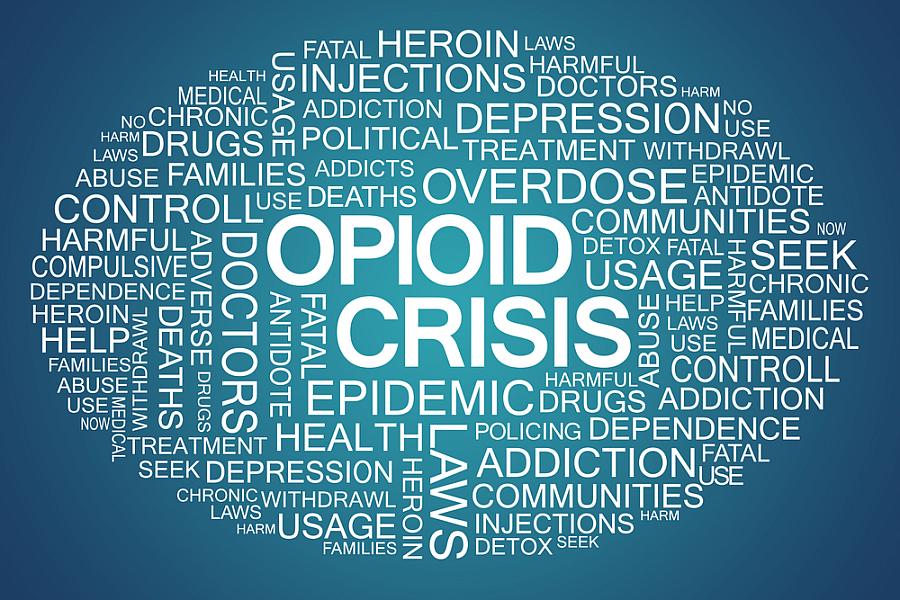What Could Happen to the Opioid Epidemic in a Post ACA World

As a recovering addict myself, I’m afraid for our future.
I know what it’s like to lose everything, but I also know what it’s like to make a comeback. Everyone should have a chance to heal, but I fear that recovery may not be a viable option for all in a post-ACA world.
One unfortunate truth is that our future will not have a shortage of opioid-addicted people.
Preliminary data compiled from hundreds of health agencies and reported on by the New York Times shows that overdose deaths most likely exceeded 59,000 in 2016, making drug overdoses the leading cause of death in Americans under 50.
With proposed Medicaid cuts and a meager substance abuse fund in the current version of a healthcare reform plan, the outlook for those affected by substance abuse is looking grim.
How Did We Get Here?
Although the current presidential administration is tasked with addressing the opioid epidemic, this problem has been brewing for over a decade.
A 2016 review published in the American Journal of Psychiatry reported that the paradigm for prescribing opioids shifted in the late 1990s when pain became referred to as the “fifth vital sign.” At this time, physicians were encouraged to treat pain more aggressively. From here, opioid use expanded at alarming rates. A 2013 Substance Abuse and Mental Health Services Administration survey found that the number of opioid prescriptions grew to match the adult population of the United States by 2012.
Doctors were writing as many prescriptions as there were adult human beings in this country.
Well over 200 million opioid prescriptions have been prescribed since 2008.
Not only must this problem of epic proportions be corrected, but our healthcare system must have policies in place to help insured Americans get adequate treatment for their addiction problems.
How the AHCA Addresses the Opioid Epidemic
Although the Affordable Care Act (ACA) may not have been perfect, it made great strides in addressing the opioid epidemic.
The act mandates that insurance plans provide a base package of essential health benefits that include mental health and substance use services. This ensures that everyone with insurance has access to basic substance abuse services.
Under the ACA, all benchmark insurance plans must also cover one drug in every United States Pharmacopeia (USP) therapeutic category and class. Medications used to treat substance abuse fall into the Anti-Addiction/Substance Abuse Treatment Agents category. Within this category, there are many USP classes that address addiction-recovery drugs, and insurers are required to cover at least one drug per class. This means that most insured individuals should have access to a drug to aid in addiction recovery.
The ACA also includes federal funds to support the expansion of Medicaid, which provides many substance abuse recovery benefits. According to Medicaid’s website, nearly 12 percent of Medicaid beneficiaries over 18 have a substance abuse disorder and Medicaid accounted for 21 percent of the total $24 billion spent on substance abuse disorders in 2009.
How the Current GOP Healthcare Bill Addresses the Opioid Epidemic
Although we are expecting a revised version soon, earlier iterations of the GOP Healthcare Bill have been disappointing for those concerned with the opioid epidemic – and based on the scale of the epidemic, the list of disappointed parties may include most Americans.
The GOP bill has plans to slow federal funds for the ACA’s Medicaid expansion. The plan will phase the program out slowly from 2021 to 2024. In addition, the Senate bill will cut Medicaid deeper in 2025 as the cap on Medicaid payments begins to grow at a slower rate (CPI-U).
Critics of the bill fear that Medicaid cuts could exacerbate an already overwhelming drug epidemic.
The GOP bill also includes a $2 billion fund to help people recover from substance abuse, but many are concerned that this isn’t nearly enough. The $2 billion fund for the fiscal year of 2018 covers more than just opioid treatment. According to the legislation, funds will be allocated to provide state grants to support substance abuse treatment and recovery services for people with mental or substance use disorders. In other words, the money will be used for a broad range of mental disorders of which substance abuse is part.
Where Do We Stand Today?
While we are awaiting the next iteration of the GOP healthcare bill, we know that Republicans have chosen a fast-track budget maneuver called reconciliation because it prevents a Democratic filibuster. This means that Republicans only need a simple majority to pass the bill. With a 52 to 48 majority, there’s a slim margin for error and most republicans must vote in favor of the bill.
What Does a Post ACA World Look Like?
With funding cuts to Medicaid and a sparse treatment fund, people who have become addicted to opioids will find it more difficult to get the help they need, including recovery counseling and medication. Our best hope will be to slow the rate at which people are becoming addicted, and the Comprehensive Addiction and Recovery Act (CARA) of 2016 could be a viable option.
This law authorized $181 million to be spent on prevention, treatment and recovery, but it is not robust enough to solve the problem without a viable healthcare solution.
As a recovering addict who has seen the destruction that opioid addiction can cause, I do hope that Congress comes to a reasonable decision to help protect the elements of the ACA that address our current epidemic.
In my opinion, the most frustrating part about this bill is that it will remove recovery as an option for many addicts.

